How to charge an Electric Car at Home
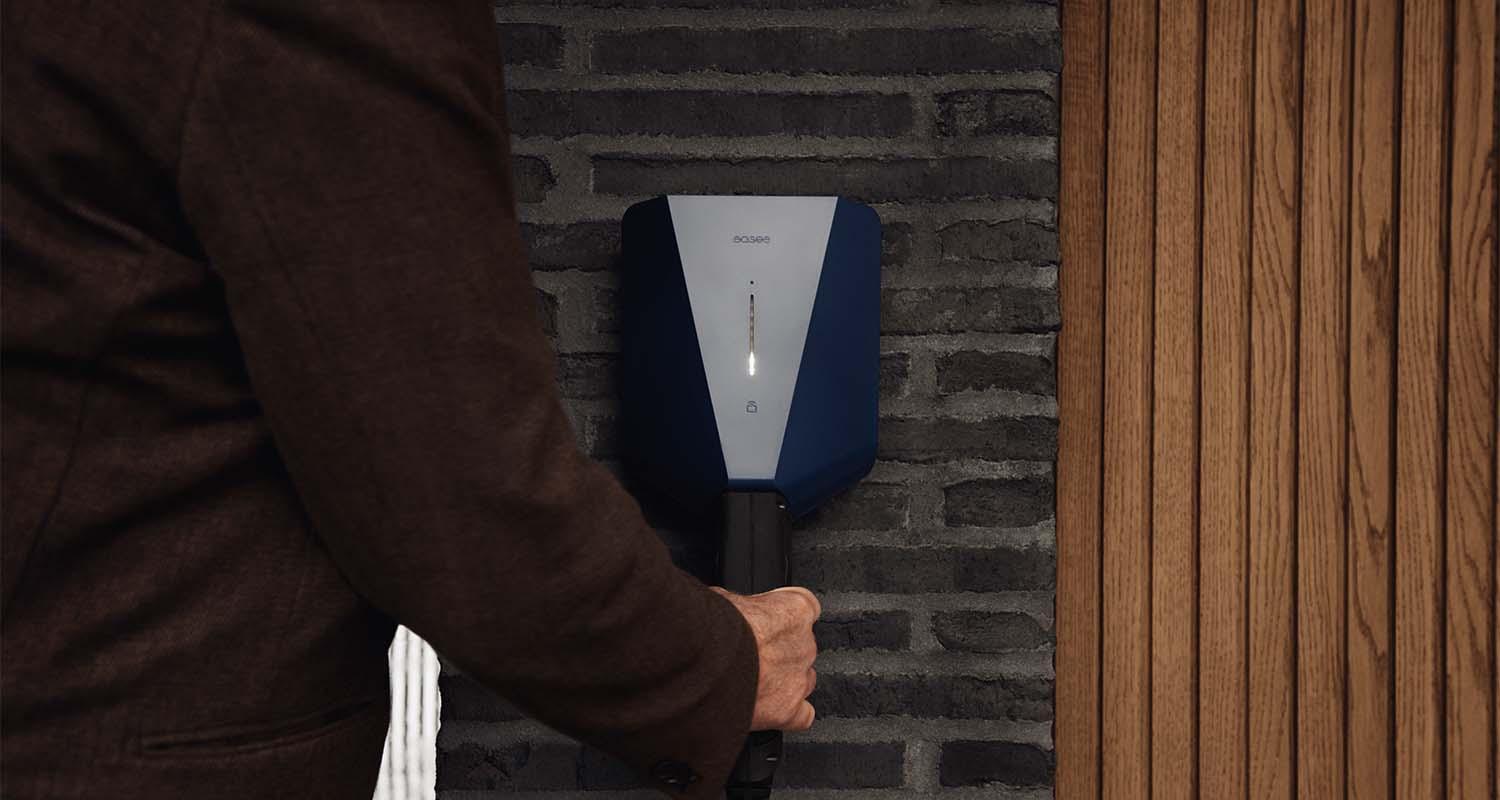
Charging your electric car at home is by far the most convenient, and in most cases, cheapest way to keep your vehicle topped up with electrons.
While public charging has its place during long journeys, relying on it as your primary method can drive up your charging bill by around 70%, especially when using rapid chargers.
You've also got to go out of your way to find a charger when using public infrastructure. In contrast, with home charging, all you need to do is pull up to your house, plug in, and go about your day. It's like having your very own petrol station at home.
What’s more, charging at home opens the door to special EV tariffs, which can save you even more money on top of what you’d spend compared to public charging.
What do you need to charge an electric car at home?
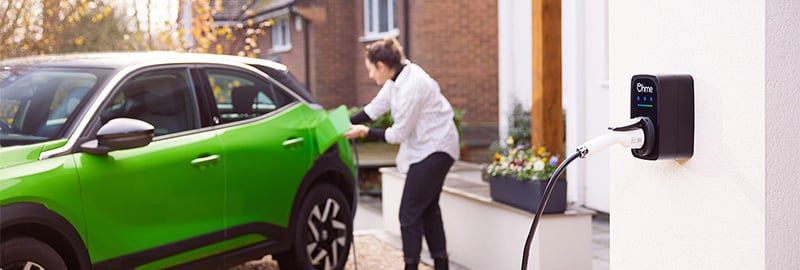
To charge an electric car at home, you will need:
Charger types
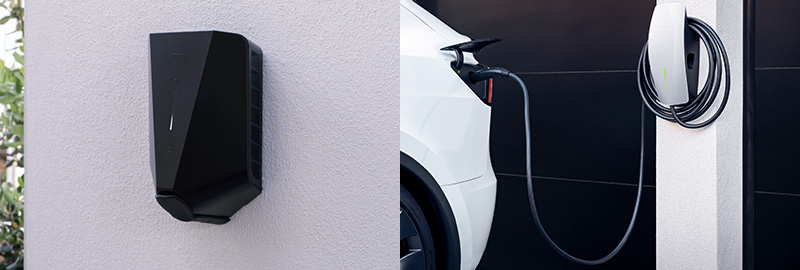
Home EV chargers come in various forms, with a range of shapes, sizes, and features.
Our “How to Choose an EV Charger” guide can help you find the perfect charge point but in summary, home chargers come either with a permanently attached charging cable (tethered) or with a socket (untethered) for inserting your own.
Most modern home chargers operate at 7.4kW when connected to a single-phase power supply.
If you have a three-phase power supply however, some chargers can take advantage of this to charge a car at up to 22kW.
We recommend bearing in mind, however, that most UK homes use single-phase power, and upgrading to three-phase can be costly.
For more information, see our guide on three-phase charging.
Vehicle compatibility

Almost all electric vehicles sold today come with a Type 2 cable connection, making them compatible with most modern home EV chargers.
The only time you might run into compatibility issues is with older EVs that use a Type 1 connection, such as the first-generation Nissan Leaf.
In these cases, we recommend using an untethered charger, which is compatible with both Type 1 and Type 2 cables.
To find out what cable connector your vehicle uses, be sure to find it on our vehicle pages.
Cables

Make sure your EV charging cable, whether tethered or untethered, is long enough to reach your vehicle without trailing above the ground.
If you're buying a separate cable for an untethered charger, you'll also need to ensure it supports the maximum charging speed of your home charger, which can usually be found on the side of the cable.
How to get an EV charger installed

Our Home EV Charger Installation Guide offers a detailed overview, but here’s a quick summary:
Once you've chosen your charger and answered a few questions about your property, we'll send you a bespoke quote.
After payment, you'll receive an online site survey to complete before we can arrange the installation.
Permissions
If you live in rented accommodation, we’ll need written permission from your landlord before any work begins.
Regardless of home ownership, approval from your area’s Distribution Network Operator (DNO) is also required.
We handle this request on your behalf and it usually takes around 10 days for the DNO to approve or decline.
In rare cases, the DNO may require upgrades to your power supply before we can proceed.
Costs
Please note that installation prices listed on our website are guide prices and may differ from your actual quote.
Factors affecting your quote include:
The distance between your meter cabinet and the intended charge point location
Additional parts required (e.g. earth rods, RCBOs, or PEN protection devices)
Installation of three-phase power (only needed for 22kW chargers)
All extra costs will be itemised in your quote.
How long does it take to charge an EV?
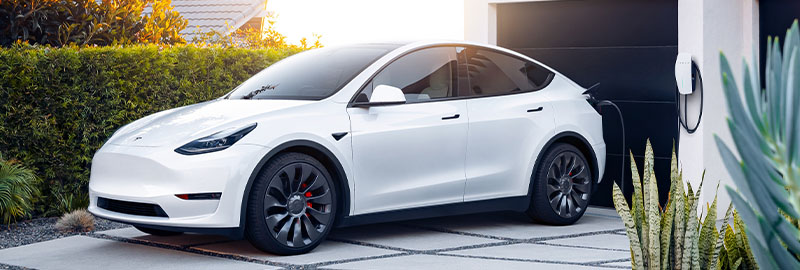
Charging times vary depending on your vehicle and the speed of your home charger.
For more detail, see our “How Long Does It Take to Charge an EV” guide. Here’s a rough overview:
Charger Type | Max charging rate | Approx range added per hour of charge |
| 3-pin plug (2.3kW) | 2.3kW | 7mph |
| Single Phase Home EV charger | 7.4kW | 30mph |
| Three-phase home EV charger | 22kW | 90mph |
How much does it cost to charge an EV at home?
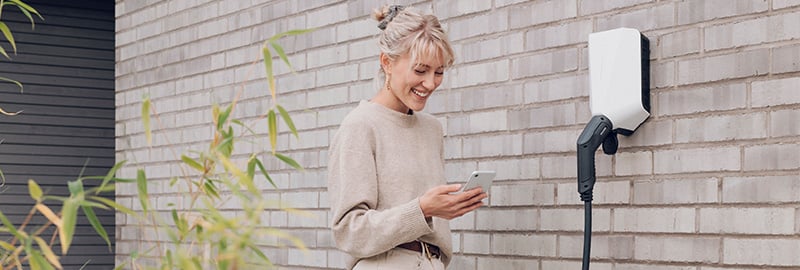
Charging can cost as little as 7p/kWh using an EV-specific off-peak tariff like Intelligent Octopus Go.
The actual cost depends on your battery size and energy tariff. Here's an example using a Tesla Model Y Long Range Performance:
Tariff | Cost per kWh | Cost per Charge | Annual mileage cost |
| Average energy tariff rate | 27.03p | £21.11 | £688.24 |
| Intelligent Octopus Go | 7p | £5.47 | £178.23 |
For a more indepth look into the costs of charging at home. be sure to check out our "how much does it cost to charge an electric car at home" guide.
How often do you need to charge an EV?
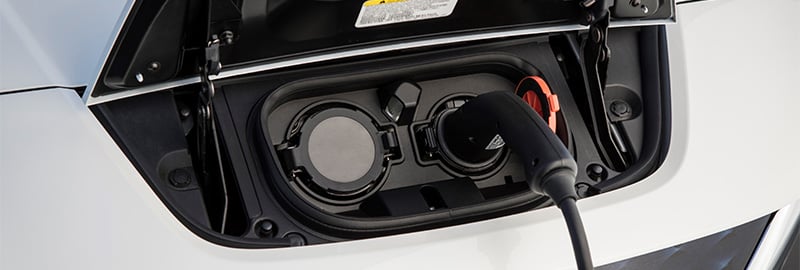
Most EV drivers plug in every night with a charge limit of 80% to avoid unnecessary battery wear.
However, charging frequency depends on your driving habits.
Daily commuting vs. long journeys
If you're mainly commuting short distances, charging once or twice a week might suffice. Most EVs offer 150 to 300 miles of range, which is more than enough for average daily drives of 30-40 miles.
For longer trips, you may need to charge more frequently and potentially use a public charger mid-journey.
Regardless, we recommend limiting regular charges to 80%, only going to 100% before a long trip. Most vehicle allow you to set a limit via its infotainment system or the dedicated app.
Driving habits to reduce your charging frequency
Driving style significantly affects battery consumption. To conserve energy:
- Use preconditioning while plugged in to heat/cool the cabin using grid power
- Avoid harsh acceleration, as it reduces range
- Use regenerative braking where possible. Heavy braking often switches to friction brakes, which don’t recover energy
Where can you charge at home?
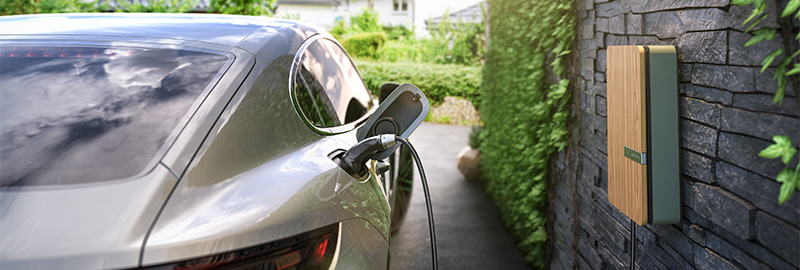
As long as your home is a permanent structure, you can install a charger on most external walls.
We recommend ensuring WiFi or mobile data is available at the installation point and that your cable reaches the vehicle without trailing. See our “Home Charger Installation Explained” guide for more.
Driveway vs on-street parking
Homes with driveways are ideal for charger installations. However, it’s still possible to install a charger if you have off-street parking elsewhere or even only on-street parking.
For on-street scenarios, avoid trailing cables across pavements. You may need to install a cable channel, get a charge arm, or use a D-Line cover. We strongly reccomend consulting your local council for approval.
Optimising energy use and tariffs
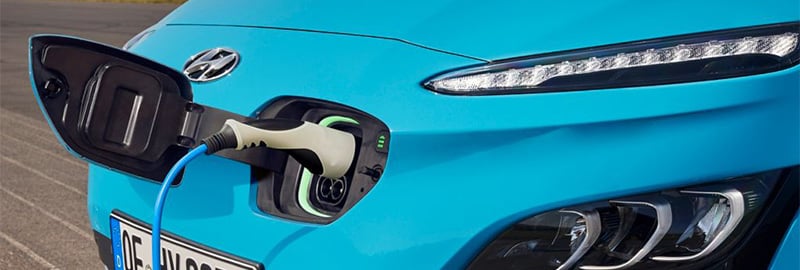
A dedicated home charger not only adds convenience, but also gives you control over energy use, cost savings, and emissions.
Smart charging
Plugging in as soon as you get home isn’t always optimal, especially with time-of-use tariffs.
Smart chargers can sync with your car and energy provider. You can schedule charging, track usage, and optimise based on grid demand. Some models, like the Ohme Home Pro, even prioritise renewable energy usage.
These features are managed through the charger’s mobile app.
EV tariffs
As mentioned earlier, switching to an EV tariff such as Octopus Go can significantly reduce costs by offering cheaper night rates. Combined with a smart charger, this ensures you charge at the lowest possible cost.
Many major UK suppliers offer EV tariffs. Use our Cost to Charge tool to find the best one for you.
Solar Integration
If you have a solar array, some chargers, such as the Hypervolt Home 3 Pro, can even divert surplus solar energy into your car, essentially allowing free charging.
See our solar charging article to find out if you can benefit from this feature.
FAQs
Can I charge my EV from a regular plug socket?
Yes, but it's slow (2.3kW) and not ideal for regular use. A full charge can take over 16 hours, and long-term use may strain the socket.
How much power does an EV charger use?
Most UK home chargers operate at 7.4kW, while three-phase units can go up to 22kW.
Can I install an EV charger myself?
Absolutely not, unless you're a qualified electrician experienced in EV charger installations! Home EV chargers require specialist components.
Can I charge my EV in the rain or bad weather?
Yes. Home chargers are built to IP standards for water resistance and only deliver power after a secure connection is made with the vehicle.
Is it OK to charge your EV every night?
Yes, as long as you don’t charge to 100% regularly. Set an 80% charge limit for daily use and save 100% for long trips.









